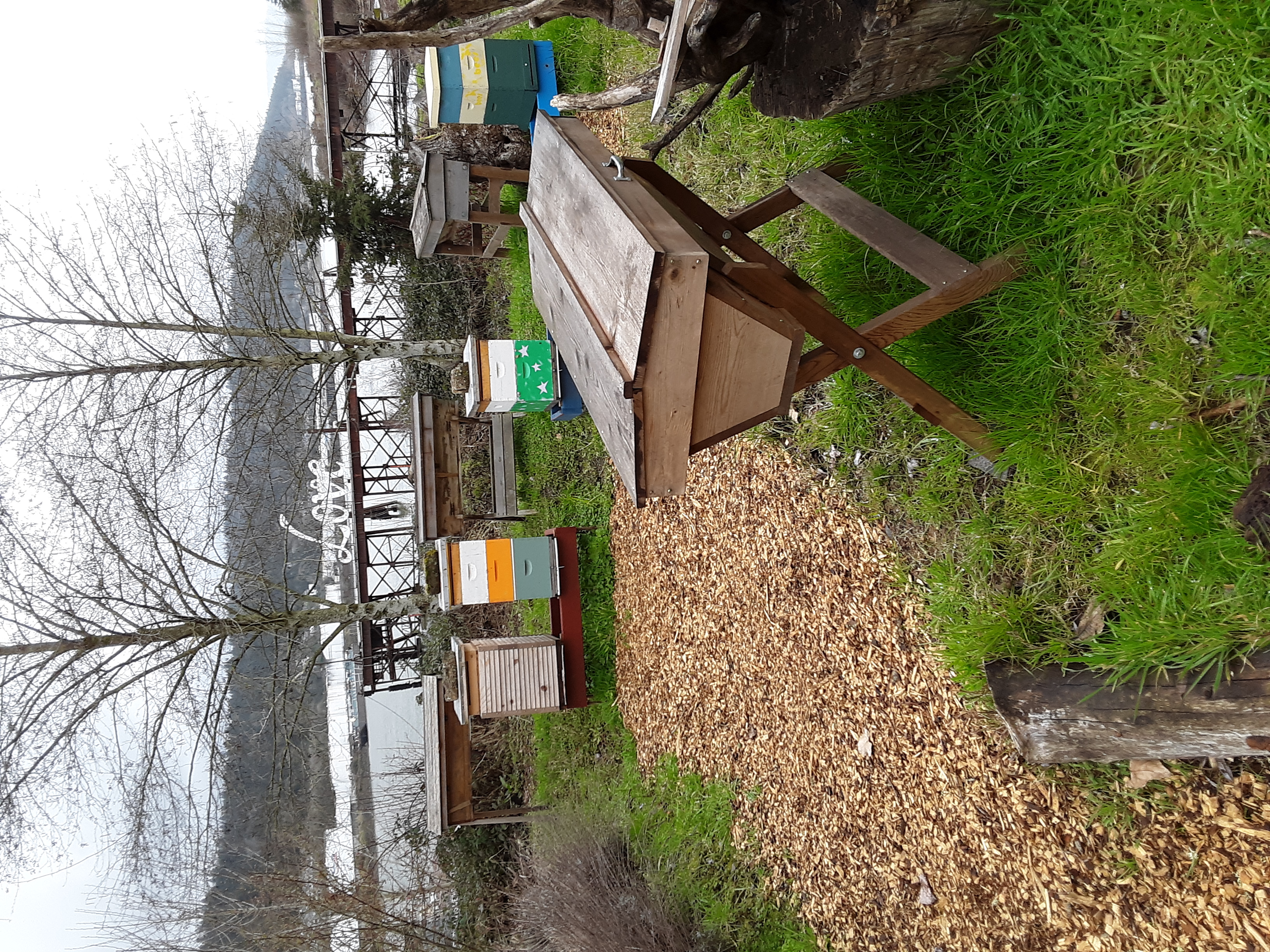Bluish, thin smoke hot to the touch; hot smoker dangerous to touch; excessive or too little smoking leading to non-responsive bees potentially stinging when colony opened; excessive number of stings in gloves; bees attempting to sting.
A smoker is a tool used to reduce defensive behavior of bees. A smoker is a metal cylinder with bellows. A smoky fire is created and the bellows used to puff smoky air into a colony being inspected. Spent ashes may drop below the fuel grate and the bottom plate can become very hot as can the cylinder itself. Windy conditions may cause smoker fuel to burn too rapidly.
Hot smokers can singe bee wings and body hairs, ignite beekeeper clothing, burn exposed skin, and even start a fire in dry vegetation when the smoker is placed on the ground. There is a metal grid (shield) that can help prevent inadvertent contact with the cylinder. The grid has hooks that allow the smoker to hang from the hive side when in use.
Remaining fuel must be completely extinguished before exiting the apiaryapiary:
a place where beehives and beekeeping equipment are located; also called a bee yard. An out-apiary is a site away from the owner’s residence. because of fire danger, or the smoker plugged to cut off oxygen to the fuel when finished with inspections. A metal container (military ammunition containers work well) is useful to transport hot smokers from one site to another. Smokers can be set in metal pails in between use in colony inspection.
because of fire danger, or the smoker plugged to cut off oxygen to the fuel when finished with inspections. A metal container (military ammunition containers work well) is useful to transport hot smokers from one site to another. Smokers can be set in metal pails in between use in colony inspection.
Learning how to start a smoker so it remains useful for the duration of hive inspection is an acquired skill. Build fire using flammable material from the bottom of the cylinder, then add smoky materials once fire fully oxygenated (by pumping bellows). Pump bellows to add oxygen to fire below periodically. If smoker dies, restart rather than attempting to add fuel to top. Cool a hot smoker with green grass to slow burn.
Individuals use a wide variety of materials for extended smoking, such as burlap, pine needles, various plant material, decaying wood, egg cartons, fabric (such as denim), and commercial wood pellets.
Improper or excessive smoking of bees may cause bees to abandon (abscond) their hive. It may also result in irritable bees and/or a defensive colony.
MacFawn D. 2019. Smokers. Bee Culture. Accessed 2023. https://www.beeculture.com/smokers/
Chan Rambo. 2015. My bee smoker smoke may be too hot. Beesource. Accessed 2023. https://www.beesource.com/threads/my-smoker-smoke-may-be-too-hot.309040/
Mangum W. 2016. Thermal Beekeeping: Look Inside a Burning Bee Smoker. American Bee Journal. Accessed 2023. https://americanbeejournal.com/thermal-beekeeping-look-inside-a-burning-bee-smoker/
Caron DM and Connor LJ. 2022. Honey Bee Biology and Beekeeping, Third Edition, Chapter 13. Wicwas Press, Kalamazoo, MI, US. 480 pages.
Goldenbee. 2017. The Bee Smoker. Golden Bee ApiariesApiary:
a place where beehives and beekeeping equipment are located; also called a bee yard. An out-apiary is a site away from the owner’s residence. . Accessed 2023. https://goldenbee.ca/smoker/
. Accessed 2023. https://goldenbee.ca/smoker/
Carter A. n.d. How to use a Bee Smoker. Beekeeping Insider. Accessed 2023. https://beekeepinginsider.com/how-to-use-a-bee-smoker/